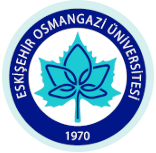ESOGU ELECTRICAL-ELECTRONICS ENGINEERING DEPARTMENT
COURSE INFORMATION FORM in pdf form
|
Course Title |
Course Code |
|
CUTTING-EDGE RESEARCH IN ENGINEERING I |
801211068 |
|
Semester in Program |
Number of Course Hours per Week |
ECTS Credit |
|
|
Theory |
Practice |
||
|
1 |
2 |
0 |
3 |
|
Course ECTS Credit Distribution |
||||
|
Basic Sciences |
Engineering Sciences |
Design |
General Education |
Social |
|
|
|
|
|
3 |
|
Language of Instruction |
Course Level |
Course Type |
|
English |
Undergraduate |
Elective |
|
Prerequisite |
None |
|
Objectives of the Course |
To inform students about the latest research in various fields of engineering To help students with setting-up goals for their professional lives To instill confidence about technological success at national level |
|
Brief Course Content |
This course consists of presentations by invited speakers who are carrying out state-of-the art research in electronics, power systems, control systems, computer vision, artificial intelligence, communication, avionics, biomedical sciences, electric vehicles, unmanned aerial vehicles, satellites and other popular fields. Presentations are followed by discussions among the students. |
|
Learning Outcomes of the Course |
Contributed POs |
Teaching Methods * |
Assessment Methods ** |
|
|
1 |
Knowledge about the latest research in various fields of engineering |
8, 10b,10c |
1,2,9 |
A, B, E |
|
2 |
Sense of ability to set-up goals for their professional lives |
8, 10b,10c |
1,2,9 |
A, B, E |
|
3 |
Confidence about technological success at national level |
8, 10b,10c |
1,2,9 |
A, B, E |
|
4 |
|
|
|
|
|
5 |
|
|
|
|
|
6 |
|
|
|
|
|
7 |
|
|
|
|
|
8 |
|
|
|
|
|
*Teaching Methods 1:Lecture, 2:Discussion, 3:Experiment, 4:Simulation, 5:Question-Answer, 6:Tutorial, 7:Observation, 8:Case Study, 9:Technical Visit, 10:Problem Solving, 11:Induvidual Work, 12:Team/Group Work, 13:Brain Storm, 14:Project Design / Management, 15:Report Preparation and/or Presentation **Assessment Methods A:Exam, B:Quiz, C:Oral Exam, D:Homework, E:Report, F:Article Examination, G:Presentation, I:Experimental Skill, J:Project Observation, K:Class Attendance; L:Jury Exam |
||||
|
Main Textbook |
Weekly material from internet |
|
Supplementary Resources |
|
|
Necessary Course Material |
None |
|
Course Weekly Schedule |
|
|
1 |
Introduction to the course and policies |
|
2 |
Presentation on EEE department and active research activities in the department |
|
3 |
Presentation on computer vision |
|
4 |
Presentation on robotics |
|
5 |
Presentation on power systems |
|
6 |
Presentation on artificial intelligence |
|
7 |
Review |
|
8 |
Mid-Term Exams |
|
9 |
Presentation on communication systems |
|
10 |
Presentation on internet of things (IOT) |
|
11 |
Presentation on avionics |
|
12 |
Presentation on biomedical sciences |
|
13 |
Presentation on unmanned aerial vehicles |
|
14 |
Presentation on defense systems |
|
15 |
Review |
|
16,17 |
Final Exams |
|
Calculation of Course Workload |
|||
|
Activities |
Count |
Time (Hour) |
Total Workload (Hour) |
|
Weekly classroom time |
14 |
2 |
28 |
|
Weekly study time (review, reinforcing, preparation) |
14 |
2 |
28 |
|
Homework |
|
|
|
|
Taking a quiz |
|
|
|
|
Studying for a quiz |
|
|
|
|
Oral exam |
|
|
|
|
Studying for an oral exam |
|
|
|
|
Report writing (Preparation and presentation time included) |
|
|
|
|
Project (Preparation and presentation time included) |
|
|
|
|
Presentation (Preparation time included) |
|
|
|
|
|
|
|
|
|
|
|
|
|
|
Mid-Term Exam |
1 |
1 |
1 |
|
Studying for Mid-Term Exam |
1 |
9 |
9 |
|
Final Exam |
1 |
1 |
1 |
|
Studying for Final Exam |
1 |
9 |
9 |
|
|
Total workload |
76 |
|
|
|
Total workload / 30 |
2,53 |
|
|
|
Course ECTS Credit |
3 |
|
|
Assessment |
|
|
Activity Type |
% |
|
Mid-term |
50 |
|
Final Exam |
50 |
|
Total |
100 |
|
COURSE CONTRIBUTION TO THE PROGRAM OUTCOMES (5: Very high, 4: High, 3: Middle, 2: Low, 1: Very low) |
||
|
NO |
PROGRAM OUTCOMES |
Contribution |
|
1 |
|
|
|
|
|
|
|
|
|
|
|
|
2 |
Skill of defining, identifying, formulating and solving the complicated problems in Electrical-Electronics engineering and related areas by applying appropriate analysis and modelling methods. |
|
|
3 |
Skill of designing a complicated process, system, equipment or product by applying modern design methods under realistic constraints and conditions. |
|
|
4 |
To analyze and solve the complicated engineering problems:
|
|
|
|
|
|
5 |
To study the complicated on the complicated Electrical-Electronics engineering problems and research subjects:
|
|
|
|
|
|
6 |
|
|
|
|
|
|
7 |
|
|
|
|
|
|
|
|
|
|
|
|
8 |
Awareness of the necessity of life-long learning and skill of accessing to information and following the improvements in contemporary science and technology |
5 |
|
9 |
|
|
|
|
|
|
10 |
|
|
|
5 |
|
|
5 |
|
|
11 |
Knowledge about the effects of engineering applications and practices on the global and social health, ecology and safety, knowledge about the current problems in relation to the working areas of Electrical-Electronics engineering; and awareness of the legal issues resulting from engineering solutions |
|
|
12 |
Knowledge about modern problems in local and universal scale |
|
|
INSTRUCTORS |
||||
|
Prepared by |
H. H. Erkaya |
|
|
|
Date:25.07.2024

